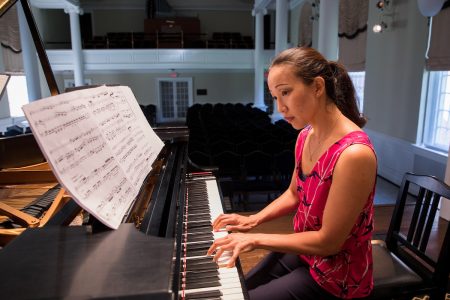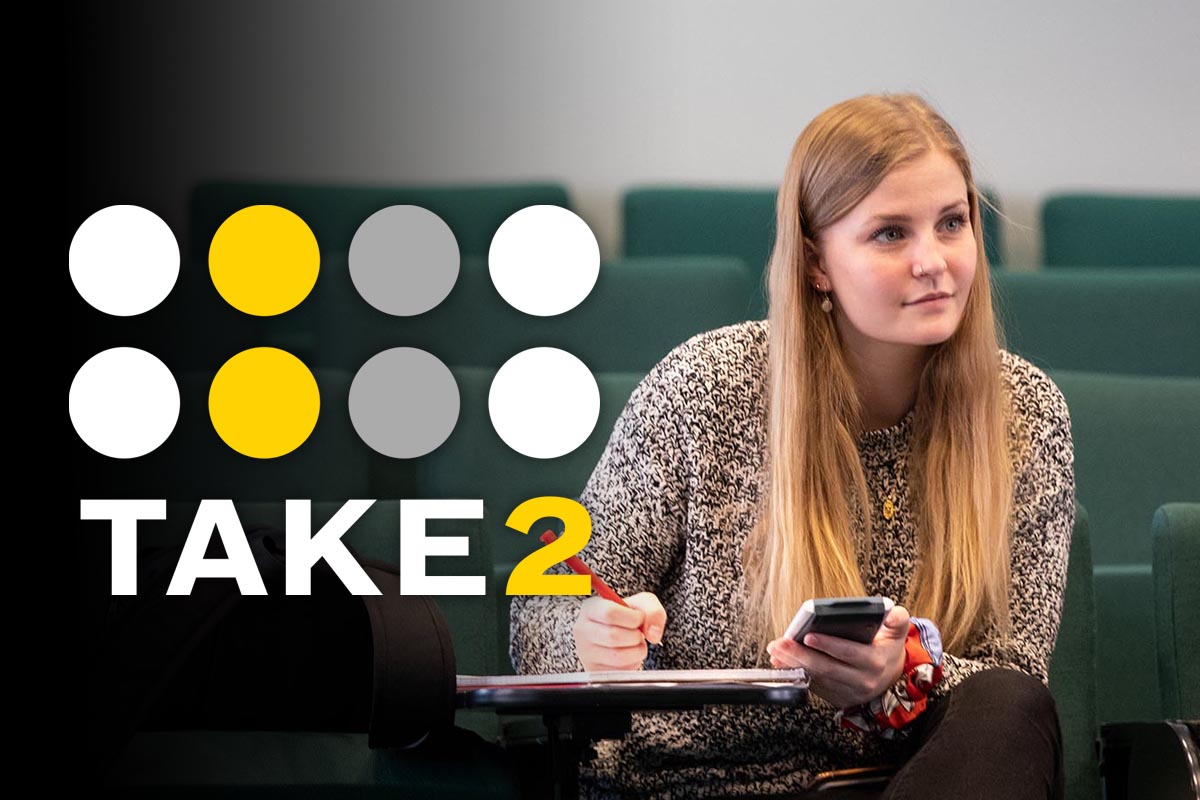Hitting a new note: Randolph music faculty expand online instruction for students

Emily Yap Chua, chair of Randolph’s music department
As the fall semester begins, Randolph College professors are working to keep the music alive for students, thanks to lessons learned last spring.
Going remote in March presented a particular challenge to the music faculty, but they found ways to deal with the challenges—holding asynchronous classes when possible and providing students with video and audio click tracks they could download and rehearse alongside at home.
Music professor Randall Speer eventually put together a virtual spring concert using submitted videos of orchestra and chorale students.
“On all these video conferencing programs, it’s uni-directional on the microphones. Sound only travels in one direction,” music professor Emily Yap Chua said when the College first transitioned to online classes. “We couldn’t do it where students could be singing at the same time we played. There’s a delay, so that’s a problem that is really unique to our discipline.”
Now they’re using what they’ve learned—plus some new technology—this fall.
Chua said they’ll be employing apps designed for audio optimization and musical collaboration.
“There have been some apps developed, and we’re testing a few so Randy (Speer) can run chorale rehearsal,” she added. “You can have everybody in the app ‘room’ virtually. The apps record each participant individually while they perform with a guide track, and then the software puts the participants together into one audio/video file. Then he can take it and play it back to them. There’s a very low lag time between their performance and when they get feedback.”
Chua, music department chair, said she also made sure faculty members were aware of webinars and other professional development opportunities. The Peabody Conservatory, for instance, held a series of free lunch and learn sessions focusing on everything from remote teaching strategies to digital audio solutions.
She’ll hold some of her classes asynchronously, while continuing to do lessons in real time.
“There’s a lot we learned in the spring about how we can even optimize audio for the lessons everybody’s teaching,” she said. “For my lessons, I’m running the video and audio feed separately. I watch them on the video through Google Meet and run the audio through another program, and the quality is so much better because the program is tasked for just that one thing. Because music involves sound, and sound compression is complicated, we’ve had to be a little bit more innovative in figuring out how we do those things.”
Chua said the process has been helpful for students as well, giving them more insight into the technical side of audio and video production.
“They’re learning things about microphone placement and microphone gain, and the kind of things you have to do in order to make a recording sound good. It’s just helping them think about all elements of the presentation of the performance.”
Tags: chamber orchestra, chorale, fall 2020, music, music department, music voice, online learning, quotables-music, virtual learning
